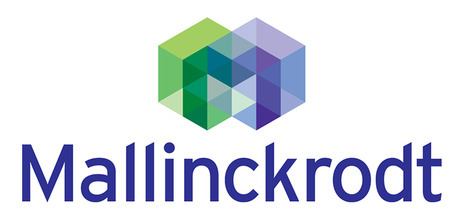Type Public Website mallinckrodt.com Revenue 3.347 billion USD (2015) Founded 2013 | Headquarters United Kingdom CEO Mark C. Trudeau Number of employees 5,500 Net income 308.2 million USD (2015) | |
 | ||
Traded as NYSE: MNK
S&P 500 Component Parent organization &E Construction Products Inc Profiles | ||
Mallinckrodt Pharmaceuticals, based in Staines-upon-Thames, England, with its U.S. headquarters in St. Louis, Missouri, produces specialty pharmaceutical products, including generic drugs and imaging agents.
Contents
Mallinckrodt manufactures and distributes products used in diagnostic procedures and in the treatment of pain and related conditions. This includes the development, manufacture and distribution of specialty pharmaceuticals, active pharmaceutical ingredients, contrast products and radiopharmaceuticals. The company employs 5,500 at 47 locations around the world. Net sales were $2 billion in 2011.
Early history
In 1867, the Mallinckrodt brothers, Gustav, Otto and Edward, founded G. Mallinckrodt & Co. in St. Louis, Missouri. The Mallinckrodt family had immigrated from Germany, and Otto and Edward both returned to Germany, the leading chemical powerhouse of the time, for advanced training. Mallinckrodt Chemical Works was incorporated 15 years later. By 1898, the company had established itself as a pharmaceuticals supplier and in 1913 became the first to introduce barium sulfate as a contrast media for x-rays.
Nuclear waste in St. Louis, Missouri
Henry Farr and John Ruhoff, technical managers for Mallinckrodt, Inc. were directed by Edward Mallinckrodt, Jr. to develop a chemical process for purifying large quantities of uranium. Uranium purified by Mallinckrodt was used at the University of Chicago Chicago Pile-1, the first nuclear chain reaction. Mallinckrodt also contributed uranium to the Manhattan Project, producing fissionables used in the atomic weapons detonated over Hiroshima and Nagasaki. From 1942 to 1957 Mallinckrodt purified 50,000 short tons (45,000,000 kg) of uranium products at various locations in and around the city of St. Louis. The waste was secretly dumped on Coldwater Creek and in various St. Louis suburbs, including Berkeley, Hazelwood, Bridgeton, and Weldon Spring with the approval of the federal government, which is now taking financial responsibility for the cleanup. The dumping substantially contaminated Coldwater Creek.
Cleanup efforts are now underway by the Army Corps of Engineers. Cleanup sites include the St. Louis Downtown Site (SLDS), where uranium was refined; the St. Louis Airport Site (SLAPS), where waste produced at SLDS was stored; the Hazelwood Interim Storage Site (HISS), where waste from SLAPS was improperly relocated; and the St. Louis Airport Site Vicinity Properties (SLAPS VPs), areas where contamination was caused by relocation of waste. Additional nuclear waste was also illegally deposited at the West Lake Landfill, which has now been designated a Superfund site. Various buildings have been decontaminated and demolished and nuclear material has been excavated and shipped out of St. Louis by covered rail as part of the cleanup process, yet more nuclear waste remains in and around St. Louis.
Recent history
Market
Mallinckrodt markets its products to major wholesalers and retail drug store chains. Imaging products are marketed primarily to physicians, technologists and hospitals, imaging centers, cardiology clinics and radiopharmacies.
Products
Mallinckrodt has two main product lines.
In the fourth quarter of 2014, Specialty Pharmaceuticals accounted for 74% of net sales. Key specialty pharmaceutical products include
Key generic specialty products include:
Medical Imaging products include Optiray (ioversol injection), an iodide based contrast medium for CT scans, and Optimark (gadoversetamide injection) a Gadolinium-Based Contrast Agent used in magnetic resonance imaging of the brain or liver.
As of 1988, Mallinckrodt was the only company in the US that is allowed to receive cocaine, which it has used to make cocaine hydrochloride, a prescription drug used in hospitals as a local anesthetic by eye and ear, nose and throat doctors.
